This large suburb on the outskirts of Colombo city lies on the highway that links Colombo to Negombo. Wattala is home to a diverse range of inhabitants from a number of all walks of life and religious backgrounds including Roman Catholics, Muslims, and Tamils, all co-existing harmoniously, and visitors will find an abundance of Churches, Buddhist temples, Hindu temples, and mosques. The suburb is surrounded by beautiful natural areas, most notably the Muthurajawela Marsh, home to over 75 species of birds and 48 species of butterflies. Other highlights in the area include the Viharamahadevi Park, perfect for walks and picnics; the historic Colombo Fort; and the Dutch canal, which is lovely for boat rides.



Sitting pretty in the centre of pearl-shaped Sri Lanka is Kandalama Reservoir. The light tropical forest, caves and reservoir provide a natural habitat for a variety of fauna and flora including butterflies, deer, wild boar, porcupine and three species of monkeys. In addition, there are over 170 species of resident and migrant birds such as babblers, barbets, bulbuls, parakeets, woodpeckers and sunbirds. Not far off is the historic Aligala (Elephant Rock) jungle caves that date back to the third century BC and Sigiriya Rock, an ancient palace perched on top of a 200m rocky outcrop.
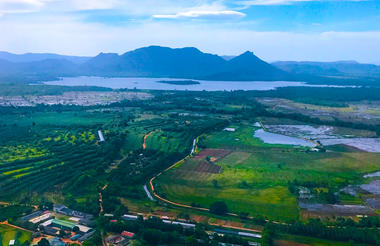
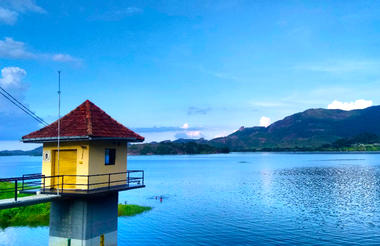
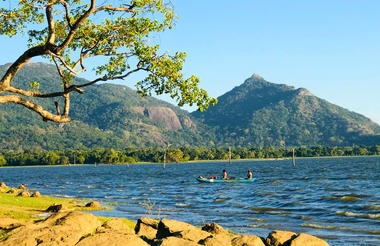
The second major city in Sri Lanka (the other being Colombo) lies at the centre of the Kandy Plateau, an area of beautiful tropical tea plantations. A magnificent must-see feature of the area is Kandy Lake, to the north of which lies the golden-roofed Temple of The Tooth (a UNESCO World Heritage Site and important place for Buddhist worship, as it is said to house a tooth relic of Buddha). Other fascinating places to visit include the Ceylon Tea Museum, the Buddhist Publication Society, the Ayurvedic centre in the Amaya Hills nearby, the Kandyan Art Association and Cultural Centre, where craftspeople can be seen at work, and the Kandy Muslim Hotel, which offers the finest spiced curries served with naan or Rotis.
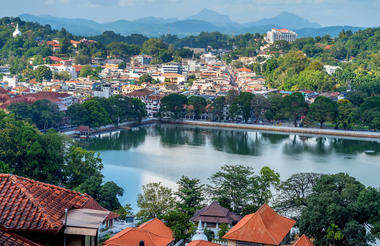
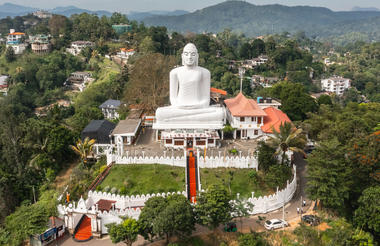
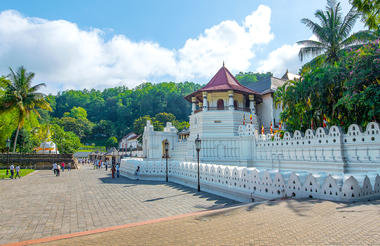
Resting on the southern edge of Sri Lanka’s picturesque Hill Country, the small, sleepy village of Ella is known for its exceptional natural scenery, its wonderfully tranquil atmosphere, and its pleasantly moderate climate. This popular backpacker-hub has become a well-established, must-see tourist destination and an ideal base for travellers exploring the idyllic surrounding countryside cloaked in tea plantations and lush forest. With only a handful of essential stores and tourist facilities, Ella has managed to retain its rural charm and visitors will find a single street winding its way down the hillside past a few quaint cafés, guesthouses and cottages enclosed in neat, flower-filled gardens. At the edge of the escarpment, you will find a classic view past the renowned Ella Rock on the right and through a cleft in the hills – the so-called Ella Gap – to the plains far below.



Tissamaharama, also known as Tissa, is a major starting point for wildlife safaris in Sri Lanka’s most famous national park, Yala, officially known as Ruhuna National Park. Surrounded by rice paddies and ancient temples, Tissamaharama is known for its rich cultural heritage and beautiful natural surrounds. Aside from its plentiful cultural and religious offerings, it is also a nature lover’s paradise. The Tissa Lake attracts flocks of roosting egrets, and a safari in the Yala National Park is a must. It covers an area of 1 260 square kilometres, but only one fifth is open to visitors. The remainder is designated as a natural reserve home to various wildlife, including elephants, leopards, sloth bears, water buffalos, wild boars, golden jackals, and spotted deer.
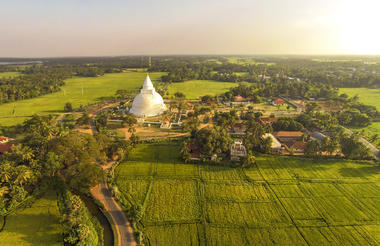

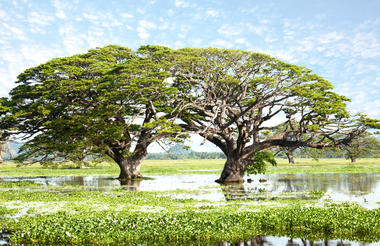
The large port town of Tangalle, in the southern province of Sri Lanka, offers locals superb fishing opportunities from a haven of sandy beaches, interspersed with photogenic rocky outcrops (giving the town its name - which means ‘projected rock’). Remnants of Dutch colonialism can be seen in the architecture; for example, in an old fort functioning as a prison today. The town serves as a starting point for a visit to the rock temple of Mulkirigala, situated on a rocky crag some 16 kilometres to the north. The temple consists of seven caves on five terraced levels, where visitors can view a number of large reclining Buddha statues interspersed with smaller sitting and standing figures, as well as some fantastical wall paintings.








